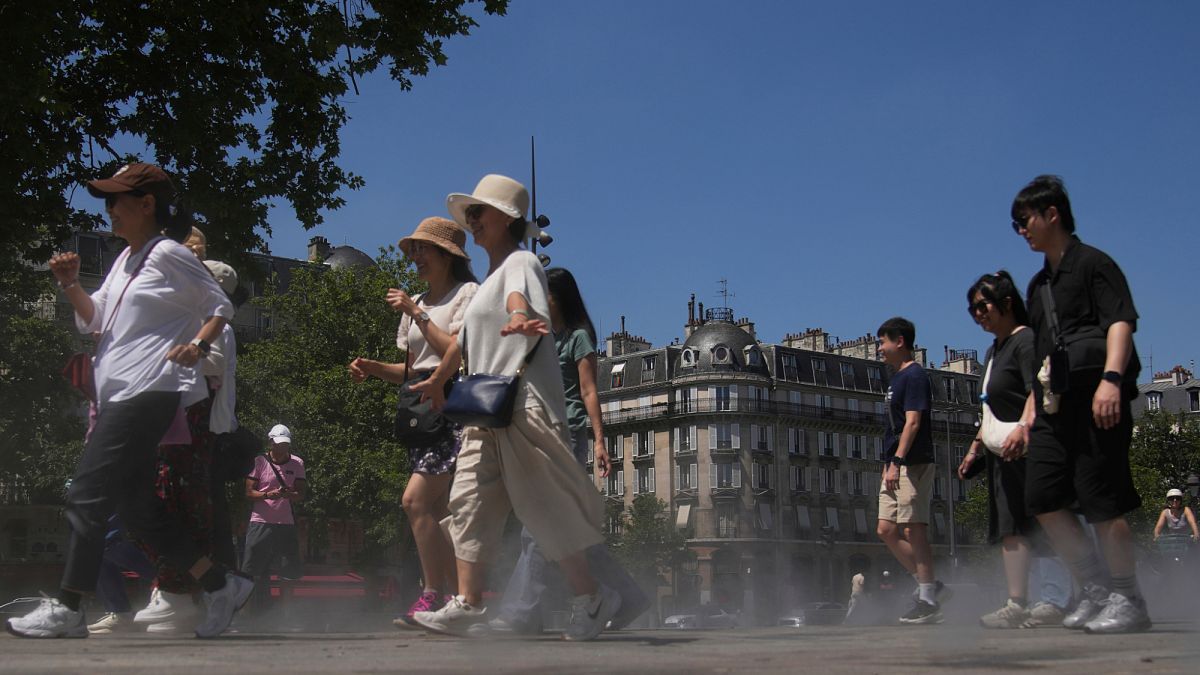Webb telescope offers a look at one of the universes most chaotic crashes


The Bullet Cluster, named for its distinctive shape, has long been considered a smoking gun for the existence of dark matter in space.
(Sorry, couldn't resist the pun.)
But the James Webb Space Telescope, a partnership of NASA and its European and Canadian counterparts, has now traced that hidden material with unprecedented precision. In new images, such as the one displayed at the top of this story, scientists have obtained the most detailed information yet on the notorious cosmic collision between two massive groups of galaxies, 3.8 billion light-years away in the Carina constellation.
What makes this cluster famous isn’t the violence of it all. It’s that the crash stripped the visible matter, such as hot gas, from the dark matter, a mysterious-yet-abundant substance that doesn't shine or interact with light. This unseen material stealthily shapes galaxies.
"Webb’s images dramatically improve what we can measure in this scene — including pinpointing the position of invisible particles known as dark matter," said Kyle Finner, a Caltech scientist involved in the research, in a statement.
This Tweet is currently unavailable. It might be loading or has been removed.
With Webb, astronomers have discovered thousands of previously unknown faint and distant galaxies and used the data to map the region’s total weight.
Long ago when the two galaxy groups slammed into each other at ultra high speeds, the visible gas clouds slowed down and got dragged behind, while the dark matter kept going. This separation was partly captured in earlier images by NASA's Chandra X-ray Observatory, but the latest Webb data reveals more subtle details.
In the new study, published in The Astrophysical Journal Letters, researchers combined measurements of strong and weak "gravitational lensing" to create a high-resolution mass map.
When a massive object like a galaxy cluster sits in the foreground of a more distant galaxy, it bends and magnifies the background light in a process called gravitational lensing. NASA often uses the analogy of a bowling ball placed on a foam mattress or trampoline to illustrate how the fabric of spacetime bends: Light that would otherwise travel straight curves as it passes through the warped spacetime. The natural phenomenon creates a magnifying glass in the sky, allowing scientists to then see even more distant objects than would ordinarily be possible.
The new map doesn't assume that light and mass must go hand in hand — a crucial consideration because dark matter doesn't shine. It instead tracks how the background galaxies appear warped.

To understand gravitational lensing and dark matter, James Jee, a professor at Yonsei University, says to think of a pond filled with clear water and pebbles. The water, in this case, is dark matter, and the pebbles are background galaxies.
"You cannot see the 'water' unless there is wind, which causes ripples," he said. "Those ripples distort the shapes of the pebbles below, causing the water to act like a lens."
The real surprise was seeing a faint trail of mass extending from the subcluster — a possible "bridge" of material that could tell a deeper story about the cluster’s past. In that trail, researchers also found what’s called intracluster light — stars that have been stripped from their home galaxies and now drift freely, bound only by the cluster’s gravity.
These stars seem to follow the dark matter closely. The researchers found the light and mass were aligned within just about 20,000 light-years. This means wandering stars could give scientists a new way to map invisible matter in future galaxy collisions.
The findings hint that the Bullet Cluster’s history may be messier than scientists thought. Rather than a simple two-object collision, the evidence points to a more complex chain of events, with other previous smashups. And even with all this new detail, researchers still haven’t captured the whole picture — Webb’s field of view only includes the "head of the giant," as one scientist put it.
"Webb’s initial images allow us to extrapolate how heavy the whole 'giant' is," Jee said, "but we’ll need future observations of the giant’s whole 'body' for precise measurements."



















































.png?Expires=1838763821&Key-Pair-Id=K2ZIVPTIP2VGHC&Signature=IO0~CT3pU-TcxGc~yoZSmoQx23MZVuK-~4jSii~NKEblRmyO3el7NXPu~Rh1o23voASg7hlcHLw4kvQuDK1jssEhcjoNBBvEpZ~GGOAU6yosBhpHpeF179F~h7i6VxmsBNh9gtTutkoqY73O2YCFey~IAqSzKbBqETP1kP9cAg1916Z1YkJJs-5MliMrkZ5d7-mWGLbpHp2wGj2VlMph8XzYlL4~y1O7fB~JdIS~Rs4RMRs2x0WT1qUIpHAsf3GdwtOyAmKFSpIg8xCyNGZZ5h~13nXlmpd7uPvW8tBfttpG9pFTqcway-uch5WyfHOEfi7UlJCOWrr6fCYY5PMgSg__)







